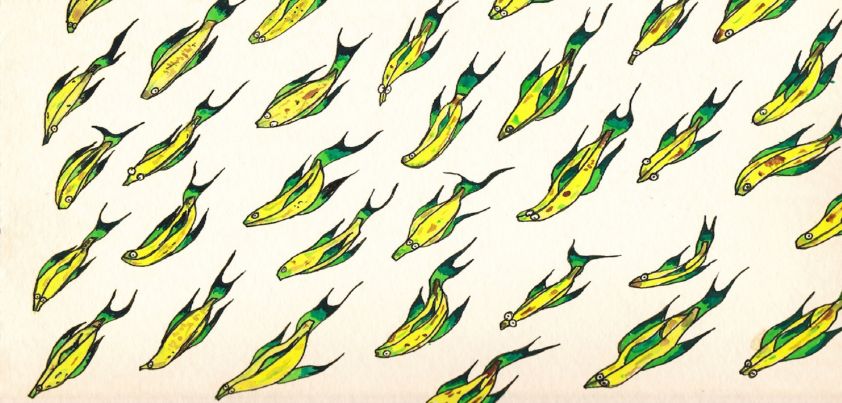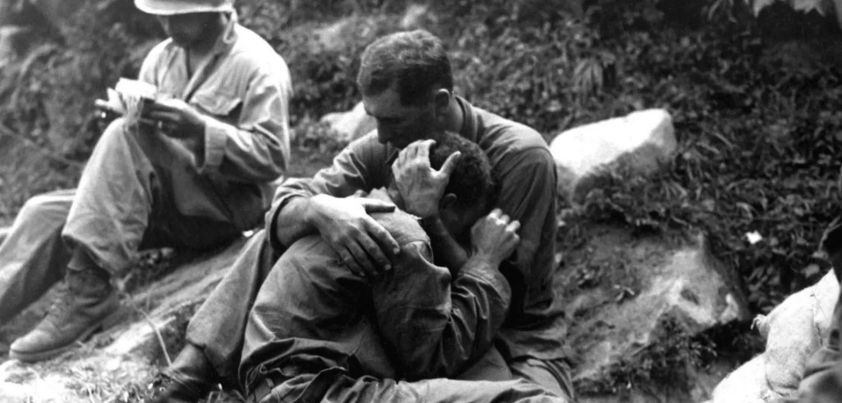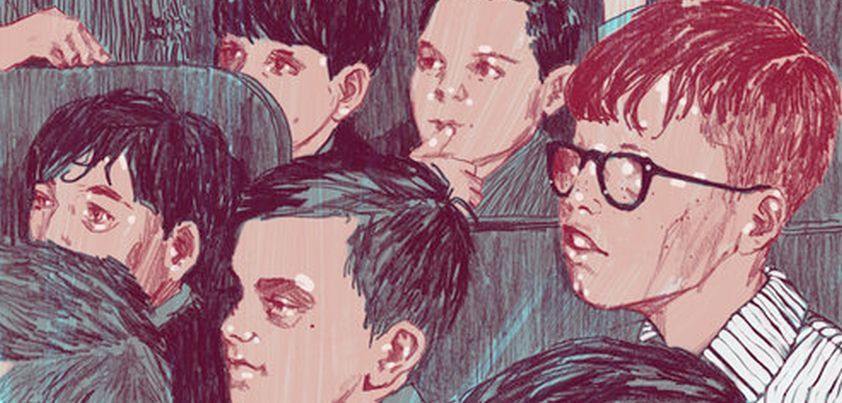 The major theme of this J. D. Salinger story is an extension of another we have featured by the same author. In For Esmé with Love and Squalor, a teenager’s friendship and compassion help a young soldier recover from PTSD. Here, a returned soldier is suffering its long-term effects. He copes by trying to avoid the company of adults (including his vain, materialistic wife) and finds pleasure in music, poetry and spending time with young children. Major themes: the effects of war on mental health, alienation, loneliness, childhood innocence, vanity and materialism, suicide. More…
The major theme of this J. D. Salinger story is an extension of another we have featured by the same author. In For Esmé with Love and Squalor, a teenager’s friendship and compassion help a young soldier recover from PTSD. Here, a returned soldier is suffering its long-term effects. He copes by trying to avoid the company of adults (including his vain, materialistic wife) and finds pleasure in music, poetry and spending time with young children. Major themes: the effects of war on mental health, alienation, loneliness, childhood innocence, vanity and materialism, suicide. More…
Archives
For Esmé with Love and Squalor
 J. D. Salinger’s Esmé is a precocious, orphaned teenage girl whose friendship and compassion help a young American soldier deal with the horrors of war. Salinger’s characterization of the soldier (Staff Sergeant X) in the second part of the story suggests first-hand experience with PTSD. This was misunderstood at the time, as reflected in the comment from Clay’s girlfriend: nobody gets a nervous breakdown just from the war and all. She says you probably were unstable like, your whole goddam life. Major themes: youthful innocence, the brutality of war and its effect on mental health, loss, humanity and hope. More…
J. D. Salinger’s Esmé is a precocious, orphaned teenage girl whose friendship and compassion help a young American soldier deal with the horrors of war. Salinger’s characterization of the soldier (Staff Sergeant X) in the second part of the story suggests first-hand experience with PTSD. This was misunderstood at the time, as reflected in the comment from Clay’s girlfriend: nobody gets a nervous breakdown just from the war and all. She says you probably were unstable like, your whole goddam life. Major themes: youthful innocence, the brutality of war and its effect on mental health, loss, humanity and hope. More…
The Laughing Man
 This J. D. Salinger story describes the relationship between members of a boy’s club (the Comanches), their youth leader (the Chief), and the imaginary hero of stories told by the Chief (The Laughing Man). One of the major themes is escape from reality through stories. In this context, the Laughing Man symbolizes the imaginary hero in all of us. Another important theme is change. Breaking up with girlfriend Mary results in the Chief “killing off” the Laughing Man, signalling to the boys that childhood pleasures (and life) don’t last forever. Other themes: appearance vs. ability, friendship, death, loss of innocence. More…
This J. D. Salinger story describes the relationship between members of a boy’s club (the Comanches), their youth leader (the Chief), and the imaginary hero of stories told by the Chief (The Laughing Man). One of the major themes is escape from reality through stories. In this context, the Laughing Man symbolizes the imaginary hero in all of us. Another important theme is change. Breaking up with girlfriend Mary results in the Chief “killing off” the Laughing Man, signalling to the boys that childhood pleasures (and life) don’t last forever. Other themes: appearance vs. ability, friendship, death, loss of innocence. More…